- Home
- Bill Pronzini
Gun in Cheek Page 3
Gun in Cheek Read online
Page 3
After the furor over this dies down, everyone retires for the evening. We are not told whether Penny and Dr. Anthony retire alone to their separate bedrooms or whether they decide to share a bed for the night; the precise nature of their relationship is never divulged. We can presume, however, that they are not now nor have they ever been intimate. Penny might wish it otherwise; she is constantly dropping little hints about not wanting to sleep alone in her bed, what with all the horrible things around. But Dr. Anthony ignores her.
Still and all, the next morning he does make an unintentional pass at Penny. He comes to her boudoir and asks if she minds having breakfast with a man in her room. She says it all depends on the man, but "inasmuch as it is you, boss, and as you are vouched for by my Puritanical aunt as about the only safe member extant of the male sex, beautiful me is willing to take a chance and allow you to enter."She's being coy, you see. Anthony sits down to breakfast with her, poises a piece of toast over his coffee cup, looks Penny in the eye, and says, "Have I your permission to dunk? I generally do it strictly in private." Penny, who knows a double entendre when she hears one, tells the good doctor that he can dunk all he wants. But Anthony, who wouldn't know a double entendre if it smacked him in the eye, still refuses to take the hint and instead begins rhapsodizing about his motion-picture theory of crime detection and prevention.
That night, everyone is again seated at the table in the dining room (except Jorgenson the seducer, who is confined to one of the guest cottages). The only female member of the mystery writers, curmudgeonly Cora Courtwright, appears for the first time—she was offstage with a headache the previous night—and immediately begins to make pithy comments. When the talk once more shifts to murder, and Zarzour alludes to her authorial talents by calling her "a superbly vicarious murderess," she says:
"I don't know whether that is a compliment or an intimation that I am a murderess at heart," chortled Cora. "And yet you may have something there, Zarzour. I will give my friend, Lang . . . a thought to mull over. Could it be true, Lang, that every good mystery writer is giving vent to a repressed desire to Commit murder—or to put it more plainly, is every mystery writer a killer at heart? If he had not turned to writing mystery fiction, would he have developed into a gangster?"
In spite of such speculation, it is not Cora Courtwright who is murdered a short while later. It is, to no one's surprise, the other obnoxious one, Ferdinand Lang. The murder takes place in more or less the same way as postulated by Zarzour the previous evening: all the lights suddenly go out, and when they come back on, Lang is lying dead across the table with a bullet in his heart; no one has moved from his chair during the blackout; a subsequent search reveals that there is no gun on any of the suspects or anywhere else in the room. Nobody heard the shot, either. Is it because a Wagnerian opus was playing on the phonograph? Is it because the Brazilian parrot let out a "guttural squawk"? Or is there another reason?
Dr. Anthony immediately assumes command, over protests from the others as to his qualifications. Cora Courtwright has the last word on the matter; when Zarzour makes grumbling noises, she says, "You'd better sit down and cool your gum shoes, Zarzour. You are only a reader of mystery fiction, and we are only the writers of such popular tripe. Therefore, the famous Doctor Anthony is in complete command of this snowbound murder castle."
Anthony proceeds to question everyone, without learning much. The mystery writers, meanwhile, argue over which of them is going to write up Lang's murder in fictional form; each wants to do so and each under the title Murder of a Mystery Writer. Nobody pays much attention to the corpse.
Suspicion falls on the dwarf, Gargoyle, when Zarzour claims to have found the murder weapon in Gargoyle's possession. (He also found a Maxim silencer, and that's why nobody heard the shot that killed Lang.) The dwarf proclaims his innocence. He doesn't know how the gun and silencer got into his coat pocket, he says, which is where he discovered them when he returned to his room after the shooting. Anthony's sharp questioning reveals that Gargoyle had once spilled a glass of water in Lang's lap and Lang had cursed him for his clumsiness. Everyone thinks this is a very damning motive for murder. Cora is particularly pithy in her condemnation: "Does anybody know whether cretinism causes people to see better in the dark than normally built people?"
Dr. Anthony isn't so sure of Gargoyle's guilt, though. As he confides to Penny later, "I'm inclined to think that there is a much deeper psychological basis for this crime than a dwarf committing murder to avenge a personal insult."
Another startling development occurs the following morning, when Jorgenson is found stabbed to death in his cottage.
Anthony and Penny immediately rush to the scene, where the doctor soon discovers that the artist did not die instantly from his wounds. He had time to crawl to a desk, on which was a sketch pad, and to draw three Indian symbols—eagle feathers, a snake, and a tepee. Anthony decides these must be a clue to the identity of the murderer, so he carts the note off to his portable laboratory for further study. He also carts the corpse off to the portable lab for a quick autopsy—a medical talent sorely lacking in most other ADs.
Some time later, while Anthony is preparing his equipment so that that he can put his motion-picture theory of crime detection and prevention into its first practical use, Sonia Zarzour appears and tells the doctor and Penny that she has something to show them in the cellar. The something turns out to be a ladder and a trapdoor in the ceiling. "That opening," she says, "allows a person to enter into the hollow body of the statue of the black cat in the dining room. If you will climb up the ladder, Doctor, you will find that you can enter the interior of the black cat and look through its open mouth into the dining room."
Anthony makes an immediate deduction: "Now we know how the murder of Mr. Lang could have been committed. Someone standing inside the body of the black cat would be able to fire a revolver through its mouth!" And when Mrs. Zarzour proceeds to tell them that Gargoyle used to climb up inside the cat and make ghostly noises to frighten the guests, as part of her husband's Mystery Lodge trappings, Penny remarks, "That makes the case against Gargoyle bulletproof, doesn't it?"
While the doctor hurries off to his room to do some more work on the motion-picture theory of crime detection and prevention, Penny searches the cellar for clues. And finds one, "a bit of metal formed into two cylinders," which she takes straightaway to Anthony. He identifies it as "a child's whistle, or a tuning pipe," and promptly records it on film.
All sorts of other clues and things are also recorded on film, with Penny acting as "camera woman." Then, after Anthony has processed the film in his portable crime lab and morgue, all the suspects are gathered together in the drawing room. There they are shown film clips of the revolver and Maxim silencer, of the whistle, of the statue of the black cat; and filmed interviews with Gargoyle, with one of the Chinese servants, with Oswald, and finally with Zarzour. At the end of each interview, the interviewees are depicted stabbing the dummy with overhand downward thrusts. All except Zarzour, that is. He starts to stab the dummy with an underhand upward thrust and only at the last instant changes it to an overhand downward thrust.
Zarzour, therefore, is the murderer.
And it has been proven by the motion-picture theory of crime detection and prevention!
For Jorgenson had been stabbed in the back with an underhand upward thrust, not an overhand downward thrust, and Zarzour is the only one present who stabs dummies (or people) that way. His motive? It seems that Zarzour was confined to an asylum in New York after having been convicted of some sort of heinous crime, and that Jorgenson had once sketched Zarzour as part of his series of murderer portraits. Zarzour was afraid that Jorgenson would recover from his amnesia and recognize him (in spite of the fact that, we subsequently learn, Zarzour has had plastic surgery, which altered his appearance from handsome to Carradine/Rickles). So killing the ruiner of young girls was imperative. Besides which, he had also killed Lang and murder was old hat to him by that time.
"I spent some time in Mr. Zarzour's excellent library before I was able to translate them. Among the Indian tribes of New Mexico such sign language was their only means of written communication These eagle feathers mean Big Chief This snake is a symbol meaning evil, or an evil person. And the final sketch, which you will all recognize, is an Indian tepee, denoting home."
Wade paused so everyone would have time to study the drawings and digest what he had said. Then he went on, "The meaning, therefore, as I interpret the symbols, is that the person who stabbed Jorgenson was the Big Chief or Master of a home or house, and that he was an evil person. That, Mr. Zarzour, could hardly be anyone but you!"
Zarzour doesn't have anything to say, although "a movement of his cheeks indicated that he was moving his jaw-bones up and down, and his attitude had become obviously tense."
Anthony proceeds to explain how the murder of Lang was accomplished. The lights did not go Out accidentally that night, he says; they went out when Zarzour blew into one of the tubes of the whistle Penny found in the cellar. It is a supersonic receiving set mounted inside the black cat statue and connected to the main light switch. The second tube, of course, activated "a tiny motor, when the tonal vibrations are transmitted to an electromagnet and the infinitesimal power generated is stepped up by means of a series of amplifying tubes," thereby turning a wheel with a string or wire attached to the trigger of the revolver, which is also mounted inside the black cat. As soon as the gun discharged, Zarzour dropped the whistle down the cat's gullet and through the trapdoor into the cellar. (Why he left it lying on the cellar floor for Penny to find is never explained. Nor is it ever explained how he managed to mount the gun inside the mouth of a ceramic statue. On the other hand, it is explained how Zarzour could be sure the mounted gun was aimed at Lang's heart: he had bolted that particular chair to the floor.)
Anthony continues: "After you were searched you had an opportunity to leave the dining room and go down to the basement. You had to do that in order to close the trap-door and remove the supersonic receiving sets. . . . As stated, one of the supersonic sound receiving devices operated under certain high frequency vibrations given out by blowing on one tube of this whistle. The other device was acted upon by different vibrations given out by blowing on the second tube."
But what about the gun? "While you were inspecting the body of Lang," Zarzour confesses, "I had a chance to take out the revolver with the silencer from the opening in the head of the statue. . . . My only chance was to slip the revolver and silencer into Gargoyle's pocket . . ."
Zarzour's motive for killing Lang has nothing to do with the writer having an affair with Mrs. Zarzour. It was simply that he has always been obsessed with committing the perfect crime, as Sonia notes after pushing her way to his side. "Antrim," she says, "I don't know what you've done, but I forgive you. I've known for a long time that you were in an asylum back East before we were married, paying the penalty for your first attempt at a perfect murder!"
But Zarzour isn't about to be shut away in another asylum. When his jawbones were working up and down, he had "taken something to destroy myself—something that I really believe will leave you completely baffled." (Not so. Following Zarzour's death, Anthony uses the facilities in his portable laboratory, as well as his autopsy-surgeon's knife, to discover that the red and white corpuscles in Zarzour's bloodstream were almost totally destroyed—the result of gulping down a large dose of irradiated phosphorus. "A most unusual manner of committing suicide," Anthony observes.)
As everyone prepares to leave Mystery Lodge, the remaining members of the Mystery Writers Guild heap praise on Dr. Anthony for his AD abilities in general and his motion-picture theory of crime detection and prevention in particular. One of them, Martenson, also notes that "Zarzour looked like a murderer—he acted like one—and he kept talking about committing the perfect crime. Now according to every precept of mystery fiction, he definitely should not have been the actual killer!"
Anthony smiles at this. And just before he and Penny drive off into the sunset (the storm has ended and the sun has come out), he leans out of the car window and says, "Don't forget, Martenson, that you are supposed to fool your readers. Maybe it pays to be original once in a while."
Maybe it does. And Murder of a Mystery Writer most definitely is an original. Not as original as the motion-picture theory of crime detection and prevention, perhaps, but pretty original just the same.
In the past two decades, the foremost addition to the AD ranks has been that of the real person no longer alive—and, in particular, the real mystery writer no longer alive—who is placed within a fictional framework in order to solve a fictional crime. Joe Gores's Hammett (1976) was the first of these, with its time frame of 1929 and its San Francisco setting; another of note, despite some rather nasty speculation and innuendo, is Kathleen Tynan's Agatha, in which Agatha Christie becomes involved in murder and intrigue during her now-famous disappearance in 1926. This sort of fictionalizing is acceptable so long as the author treats his real-life character with intelligence and insight, makes a serious effort to portray accurately the life and times of the individual, and concocts a plot worthy of that person's abilities. In the case of an item called Chandler (1977), by someone named William Denbow, none of the foregoing applies.
Chandler is a rather obvious attempt to capitalize on the modest success of the Gores novel—one of those quickie paperback exploitations that hack writers disgorge in a few days, utilizing no more research than a bottle of A Scotch. It purports to tell the story of how Raymond Chandler, during a visit to New York, saves Dashiell Hammett, who is also on a visit to New York, from some vengeful "wop" gangsters. To anyone who knows anything at all about either Chandler or Hammett, however, the characters in this novel are instantly recognizable as imposters.
The number and magnitude of the gaffes that permeate Chandler are staggering. The novel appears to take place in 1936, owing to the statement that "a few years had passed since Repeal," and owing to the fact that one of the characters, who was born in 1896, is forty years old; yet Hammett is said to have just published Red Harvest in book form (it first appeared thus in 1929) and to still be turning out pulp stories for Black Mask (his last appearance in that magazine was in November 1931 with a story called "Death and Company"). "Hammett" repeatedly refers to San Francisco as Frisco, something no longstanding resident of that city, as the real Hammett was, would ever think of doing. He is depicted as an alcoholic so cynically and hopelessly besotted that he can barely write or otherwise function without first taking a drink; we are also informed that Joseph T. "Cap" Shaw, the pioneering editor of Black Mask, has been either rejecting outright Hammett's most recent submissions or returning them for extensive revisions. Hammett's days as a Pinkerton operative are described as if he himself had been a tough pulp hero—kicking down doors, shooting and arresting gangsters, watching out that "you didn't catch a bullet from some hophead with three guns on his emaciated person." The claim is also made that Hammett was a puking drunk during his Pinkerton stint and that he had to take "a sneaky drink now and then" to steady his nerves and give him Dutch courage.
Chandler, too, is portrayed as an alcoholic, though not quite of the same whiskey-soaked variety as Hammett. He has come to New York, he tells Cap Shaw, to buy some books he has been wanting to read; when Shaw asks him if they didn't have bookshops in Los Angeles, Chandler answers that they do but "not like the bookshops on Fourth Avenue." On some occasions Chandler is made to speak in stilted Britishisms, and on others like Philip Marlowe, and on still others like a pulp hoodlum. No mention is made anywhere of his elderly wife Cissy, who was far more important to him than either alcohol or his writing, or of any other aspect of his life in southern California. (Similarly, no mention is made of Hammett's relationship with Lillian Heilman, his Hollywood connections, his Communist affiliation, or of
anybody or anything else that shaped and controlled his life in the thirties.)
In a drunken scene with Hammett, who has refused to meet with Chandler unless he agrees to bring a quart of Jack Daniel's to his hotel room, Chandler is told that he'll never make the big time unless he changes the name of his detective character from Carmady (only three of Chandler's several Black Mask stories feature a detective named Carmady) to something classier. "Let's give the mick a limey name for a change," Hammett says. "More class. I always liked Christopher Marlowe because he was some kind of secret agent. This isn't gumshoe exactly but it'll do. That's it, chum, we'll rename Carmady Chris Marlowe." And when Chandler protests that he doesn't like the name Chris because it's "too pansy," Hammett says, "I had a hound dog once, back in Maryland when I was a kid. We called him Phil. Phil was a good old dog, one hell of a good ole dog. Why don't we call your gumshoe Philip Marlowe?"
This sort of mind-boggling dialogue continues throughout. Another example:
"You don't look so good," Chandler said and wished he hadn't said it.
Knocking back the rest of his drink, Hammett snapped, "You don't look so great yourself, chum. You look like a guy who's pretending not to have a hangover."

 Twospot
Twospot Dragonfire
Dragonfire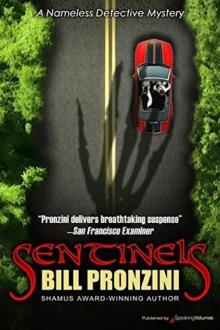 Sentinels
Sentinels The Peaceful Valley Crime Wave
The Peaceful Valley Crime Wave Hardcase
Hardcase Bleeders
Bleeders Demons
Demons The Pillars of Salt Affair
The Pillars of Salt Affair Epitaphs
Epitaphs Spook
Spook Hoodwink
Hoodwink Bug-Eyed Monsters
Bug-Eyed Monsters Endgame--A Nameless Detective Novel
Endgame--A Nameless Detective Novel The Hidden
The Hidden The Paradise Affair
The Paradise Affair Oddments
Oddments Boobytrap
Boobytrap Blue Lonesome
Blue Lonesome Scenarios - A Collection of Nameless Detective Stories
Scenarios - A Collection of Nameless Detective Stories Breakdown
Breakdown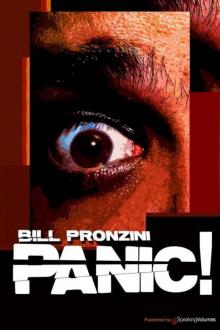 Panic!
Panic! The Bags of Tricks Affair
The Bags of Tricks Affair Quicksilver (Nameless Detective)
Quicksilver (Nameless Detective) Hellbox (Nameless Detective)
Hellbox (Nameless Detective) Nightcrawlers nd-30
Nightcrawlers nd-30 Zigzag
Zigzag The Jade Figurine
The Jade Figurine The Stolen Gold Affair
The Stolen Gold Affair The Stalker
The Stalker The Lighthouse
The Lighthouse Fever nd-33
Fever nd-33 Nightshades (Nameless Detective)
Nightshades (Nameless Detective) Scattershot nd-8
Scattershot nd-8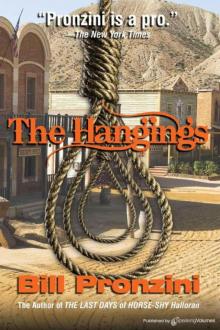 The Hangings
The Hangings Mourners: A Nameless Detective Novel (Nameless Detective Mystery)
Mourners: A Nameless Detective Novel (Nameless Detective Mystery) Graveyard Plots
Graveyard Plots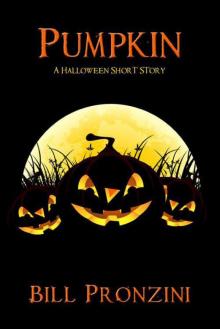 Pumpkin
Pumpkin Schemers nd-34
Schemers nd-34 The Bughouse Affair q-2
The Bughouse Affair q-2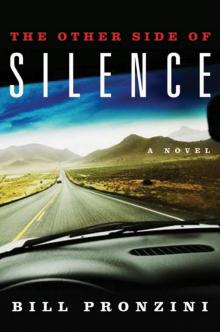 The Other Side of Silence
The Other Side of Silence Savages: A Nameless Detective Novel (Nameless Detective Novels)
Savages: A Nameless Detective Novel (Nameless Detective Novels) Crazybone
Crazybone Schemers: A Nameless Detective Novel (Nameless Detective Novels)
Schemers: A Nameless Detective Novel (Nameless Detective Novels) Gun in Cheek
Gun in Cheek In an Evil Time
In an Evil Time Son of Gun in Cheek
Son of Gun in Cheek Camouflage (Nameless Detective Mysteries)
Camouflage (Nameless Detective Mysteries)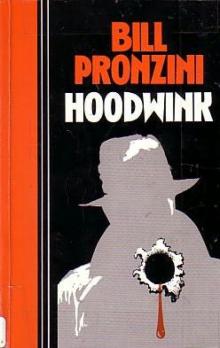 Hoodwink nd-7
Hoodwink nd-7 With an Extreme Burning
With an Extreme Burning Vixen
Vixen More Oddments
More Oddments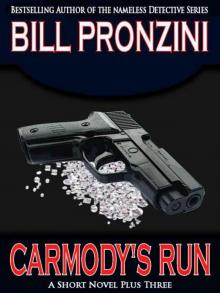 Carmody's Run
Carmody's Run Small Felonies - Fifty Mystery Short Stories
Small Felonies - Fifty Mystery Short Stories Labyrinth (The Nameless Detective)
Labyrinth (The Nameless Detective) Jackpot (Nameless Dectective)
Jackpot (Nameless Dectective) Case File - a Collection of Nameless Detective Stories
Case File - a Collection of Nameless Detective Stories Undercurrent nd-3
Undercurrent nd-3 Betrayers (Nameless Detective Novels)
Betrayers (Nameless Detective Novels) Deadfall (Nameless Detective)
Deadfall (Nameless Detective) Bones nd-14
Bones nd-14 The Snatch nd-1
The Snatch nd-1 Bindlestiff nd-10
Bindlestiff nd-10 Blowback nd-4
Blowback nd-4 A Wasteland of Strangers
A Wasteland of Strangers Double
Double The Bags of Tricks Affair--A Carpenter and Quincannon Mystery
The Bags of Tricks Affair--A Carpenter and Quincannon Mystery Quarry
Quarry Nameless 08 Scattershot
Nameless 08 Scattershot Mourners nd-31
Mourners nd-31 The Vanished
The Vanished Savages nd-32
Savages nd-32 Quincannon jq-1
Quincannon jq-1 Hellbox nd-37
Hellbox nd-37 The Crimes of Jordan Wise
The Crimes of Jordan Wise Bones (The Nameless Detecive)
Bones (The Nameless Detecive) Nothing but the Night
Nothing but the Night Camouflage nd-36
Camouflage nd-36 Pumpkin 1doh-9
Pumpkin 1doh-9 Blowback (The Nameless Detective)
Blowback (The Nameless Detective) Give-A-Damn Jones: A Novel of the West
Give-A-Damn Jones: A Novel of the West Shackles
Shackles The Violated
The Violated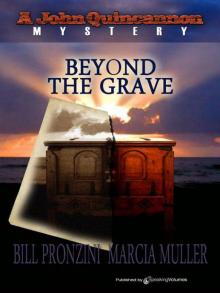 Beyond the Grave jq-2
Beyond the Grave jq-2![The Vanished - [Nameless Detective 02] Read online](http://i1.bookreadfree.com/i2/04/10/the_vanished_-_nameless_detective_02_preview.jpg) The Vanished - [Nameless Detective 02]
The Vanished - [Nameless Detective 02] Quincannon
Quincannon Undercurrent (The Nameless Detective)
Undercurrent (The Nameless Detective) Step to the Graveyard Easy
Step to the Graveyard Easy Nightcrawlers: A Nameless Detective Novel (Nameless Detective Mystery)
Nightcrawlers: A Nameless Detective Novel (Nameless Detective Mystery) The Eye: A Novel of Suspense
The Eye: A Novel of Suspense Betrayers nd-35
Betrayers nd-35 Quicksilver nd-11
Quicksilver nd-11 Acts of Mercy
Acts of Mercy Breakdown nd-18
Breakdown nd-18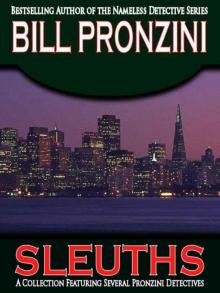 Sleuths
Sleuths![The Snatch - [Nameless Detective 01] Read online](http://i1.bookreadfree.com/i2/04/07/the_snatch_-_nameless_detective_01_preview.jpg) The Snatch - [Nameless Detective 01]
The Snatch - [Nameless Detective 01] Scenarios nd-29
Scenarios nd-29 Nightshades nd-12
Nightshades nd-12 Snowbound
Snowbound Deadfall nd-15
Deadfall nd-15 Bindlestiff (The Nameless Detective)
Bindlestiff (The Nameless Detective) Fever: A Nameless Detective Novel (Nameless Detective Novels)
Fever: A Nameless Detective Novel (Nameless Detective Novels)